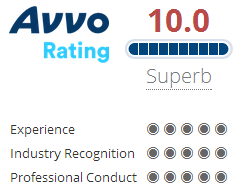California Driving Under the Influence (DUI) Charges carry severe penalties that adversely affect many aspects of your life, including freedom, driver’s license, finances, and career. One central element of the case that the prosecutor must show beyond a reasonable doubt is that you were driving or behind the wheel while intoxicated. The element forms the basis for the “no driving defense,” a strategy you can apply in the defense to prevent a guilty verdict or for a charge dismissal.
Legal Definition of Driving
Per California Vehicle Code (VC) 23152a, it is an offense to operate a car while intoxicated by alcohol or drugs. VC 23152b criminalizes driving a vehicle with a blood alcohol content (BAC) of at least .08%. The prosecutor should show that you drove the car for a conviction under DUI laws. This element must be present to be guilty of a DUI offense. In many states, you can face DUI charges for mere physical control over the car. However, under California DUI statutes, the prosecutor must demonstrate that you drove the vehicle.
"Drive" means that you, the defendant, caused the volitional movement of the car. So, an intoxicated person in the driver's seat of a parked car cannot be convicted of drunk driving even if the car keys are in the ignition, unless the prosecutor can prove that you intentionally moved the car or engaged in a cause of action to cause the vehicle to move.
The volitional movement standard imposes a higher evidentiary standard on the prosecutors than states that adopt the actual physical control standard. In the physical control standard, the prosecutor secures a guilty verdict by merely showing that you were seated in the driver’s seat and the keys were in the ignition. However, in California, this cannot convict you. The DA should show that you actively and deliberately caused the car to move, even the slightest distance. If you are fighting DUI charges, the high evidentiary standard gives you a chance to contest the charges; you can secure a fair verdict by arguing that you did not intentionally or voluntarily move the car, even if there were clear signs of intoxication.
The law requires the car movement to be volition for a conviction to happen; the movement it requires could be the slightest distance. Even if you intentionally drove the car for an inch, it will be sufficient to secure a guilty verdict.
Similarly, the car gear does not need to be engaged for you to be convicted of a DUI offense. Engaging the neutral gear alone can lead to a guilty verdict if the intentional action causes the vehicle to roll even for an inch, as your actions amount to “driving.”
For example, you and your coworkers go clubbing every weekend in a bar close to your workplace. One day, after several hours of drinking, you get into your car to drive home. Because of the intoxication, you attempt to put the car transmission into drive, but instead put it into neutral, which causes the vehicle to roll a few feet. Under these circumstances, you were actively and deliberately attempting to drive the car, and you moved it a few feet, meaning you are guilty, as you drove the vehicle. You will be guilty even if the car engine was not on.
Let us say you entered the car and fell asleep. When sleeping, your leg knocked the transmission, engaging the neutral gear, which caused the car to roll and collide with another vehicle. Under these circumstances, you are innocent because the car's movement was not volitional or intentional, meaning you did not drive. The court does not entirely focus on the car's movement but on your intentions when the vehicle moved.
DUI Charges With No Proof of Driving
Whether your “no driving defense” will work depends on the evidence submitted in court. The prosecution can rely on circumstantial evidence in the absence of direct proof to secure a conviction.
Direct Evidence
The most straightforward way for the prosecutor to prove you drove is through the use of direct proof, which includes:
-
The testimony of the arresting officer who observed you drive or operate the car
-
The testimony of other eyewitnesses who observed you driving
-
The pictures from traffic cameras show you driving the vehicle
-
Your statement acknowledging having been driving
-
Video recordings from a dashboard camera
In the presence of direct evidence, invoking the “no driving” defense can be challenging, as there is clear evidence to prove otherwise. However, this should not mean your case is hopeless. Admitting to an officer that you were driving can hurt your defense the most. During preliminary investigations, an innocent statement to the investigating officer can severely hurt your case. Therefore, you should exercise your right to remain silent until your attorney is present to avoid implicating statements that could be used against you in a trial. Thus, avoid answering any questions that could implicate you, especially those that seek to establish if you were driving. It is best to answer those questions once your attorney is present to avoid incriminating statements, like admitting to having been driving before you parked the vehicle.
Circumstantial Proof
It is not mandatory for a law enforcement officer or any other eyewitness to observe you driving. Without direct evidence like witness statements and video or photo evidence, the prosecutor uses circumstantial evidence to demonstrate to the jury or bench that you drove. Circumstantial evidence means the prosecutor presents facts to the court and then leaves them to infer or reasonably conclude whether they are true. The goal is to lead the jury or bench to the reasonable conclusion that the car was driven and the person who did the driving is the defendant.
The prosecutor can use physical indicators to infer that you drove the car. These indicators include:
-
A warm car engine or wheels, which point to the car having been driven
-
The car position, like parking in the middle of the street, erratic parking, or positioning the car in two lanes instead of one, with the left rear section protruding into a traffic lane
-
Parking a vehicle at an angle on the shoulder of a freeway
-
Being in the driver’s seat after an accident and sustaining injuries consistent with the position
When you were the only car occupant in a vehicle accident where authorities suspect drunk driving to be the cause, the prosecutor will claim you were the driver because there was no other person in the vehicle. Additionally, they can rely on an accident reconstruction expert’s testimony to prove you were the person driving before the accident.
The convincing power of the prosecutor’s circumstantial evidence hinges on the picture the prosecutor paints. If the proof is ambiguous and there is a reasonable doubt about its believability, you can argue that another person was driving to avoid a guilty verdict. Besides, you can introduce your experts to contest the assertion given by the prosecutor’s experts. Your work is not to disapprove the concept presented by the prosecutor. Your goal is to provide a reasonable alternative explanation to the circumstantial evidence presented by the prosecutor to create doubt in the judge’s or jury’s minds to avoid a conviction.
Instances Where You Can Apply or Invoke the “No Driving Defense”
The “no driving defense” is commonly invoked in cases where no one observed or witnessed you, the defendant, driving. These are the situations where the prosecutor depends on circumstantial proof to infer driving. The instances include:
-
DUI Accidents With No Witnesses
In many traffic collisions or accidents, the police are never present. They often arrive at the collision scene when responding to a 911 call, moments after the crash. So, it means the police rarely witness or observe DUI accidents.
In these cases, the DA cannot use the arresting officer’s testimony as evidence. Instead, they use circumstantial evidence that could point to drunk driving. They can use the physical indicators observed by the investigating officers to infer driving. Again, they can claim you are the driver, as no other person was in the car.
The use of inferential evidence in these cases leverages your defense. For instance, you hit a parked car while speeding, and pass out. The police find you unconscious in the vehicle with no other occupants and with visible signs of intoxication. With no direct evidence linking you to the accident, the police will look for inferential proof by examining the car, your sitting position, and injuries to determine if they are consistent with those someone in the driver’s seat would have sustained. The DA uses a combination of these inferential pieces of evidence to build an argument against you.
Fortunately, you can poke holes in the inferred driving under the influence in several ways. You can assert that someone else was driving the car and that they fled the scene after the crash to avoid arrest and charges. Later, the police found you passed out in the vehicle, leading them to the reasonable conclusion that you were the driver. By providing an alternative explanation to the inferential evidence presented by the prosecutor, you create doubt on the evidence submitted, rendering the prosecutor unable to meet the evidentiary standard of beyond a reasonable doubt when proving the driving element.
-
Sleeping in the Car
Another instance where you can apply the “no driving defense” is when you are arrested and charged with a DUI after police found you sleeping or unconscious in a parked vehicle while drunk or drugged. In other states, being seated in the driver’s seat, even while asleep, shows physical control of the car and is sufficient to secure a guilty verdict against you. However, in California, volitional movement is required for a conviction.
Therefore, you can invoke the “no driving defense” if your engine was turned off and the car was correctly parked with the transmission in park. The prosecutor must prove volitional movement, and merely sitting in the driver's seat does not satisfy this element. If you fell asleep at an intersection or are unlawfully parked, proving you drove the car will be straightforward. When you are lawfully parked and with the engine off, proving you drove will be an uphill task, meaning you will likely avoid a DUI conviction. However, you will still be guilty of being drunk in public under PEN 647(f), which is a lesser offense than a drunk driving violation, and a conviction does not lead to loss of driving privileges.
You are encouraged to consult with an experienced DUI attorney early in the case for guidance and to understand all the possible charges, even when the “no driving defense” is applicable.
-
The Alcohol Consumption Timing
You can fight the drunk driving charges by asserting that you had been driving while sober and that you started drinking after you stopped the car. This means that you did not drive while drunk. Again, you can claim that your BAC when you drove was within the designated limit of .08% or more and that it rose beyond the legal limit after you had parked the car. With the argument, the court can dismiss your VC 23152(b) violation case, but you will still face charges for driving while impaired with any amount of alcohol under VC 23152(a).
Emergency Exceptions of Volitional Car Movements When Under the Influence
A court has imposed an exception for intentionally moving a car during emergencies. The exception was carved in a case involving a drunk bystander who observed an accident occur and decided to drive the vehicle involved in the accident out of traffic to prevent another accident. The vehicle was severely damaged and could not have been driven far away. The court ruled that the drunk bystander’s action to drive the vehicle out of traffic does not amount to volitional movement of the vehicle, and therefore, they cannot be guilty of DUI, notwithstanding the BAC levels during the driving.
Find a Proficient DUI Defense Attorney Near Me
If you have been arrested for drunk or drugged driving and no one saw you drive, you should meet with your attorney to discuss the applicability of the “no driving defense” and other defense strategies in your case. An experienced attorney understands DUI laws and will review the evidence against you to find weaknesses in the prosecutor’s capacity to prove that you drove the car. At Jonathan Franklin DUI Attorney, we will help you navigate the court process, defend your rights, and secure a fair verdict. Call us at 323-464-6700 to arrange a no-obligation consultation in Los Angeles.














